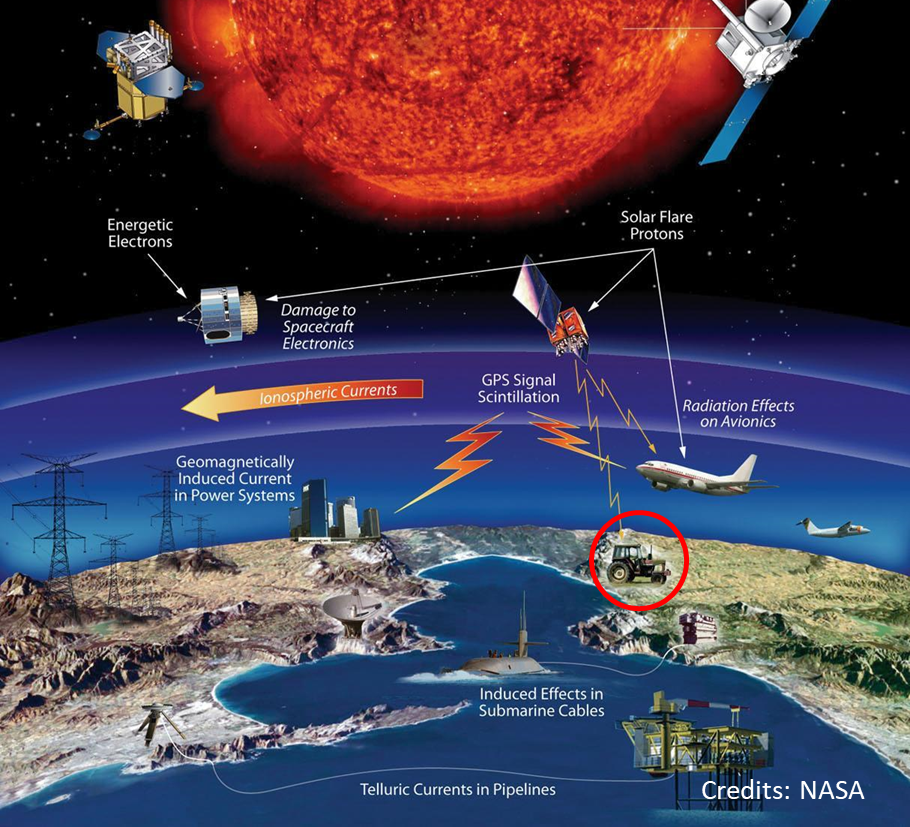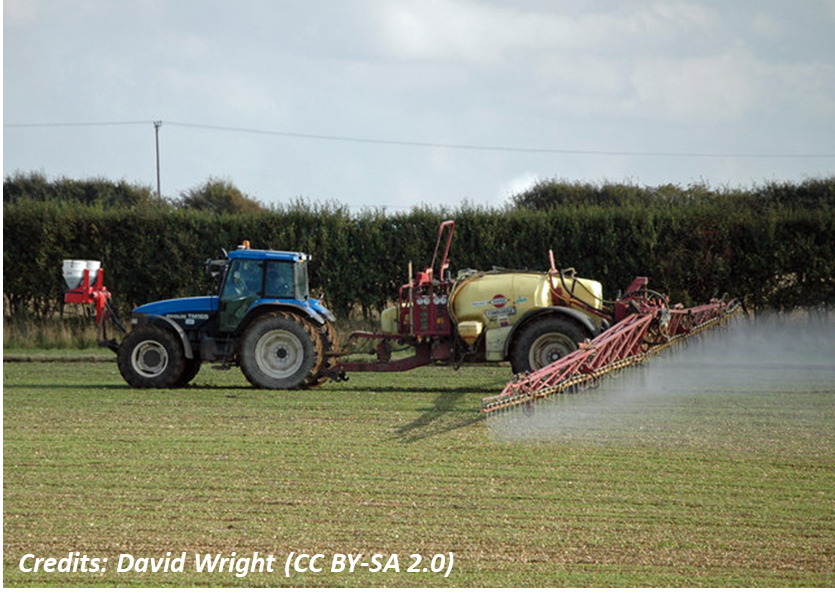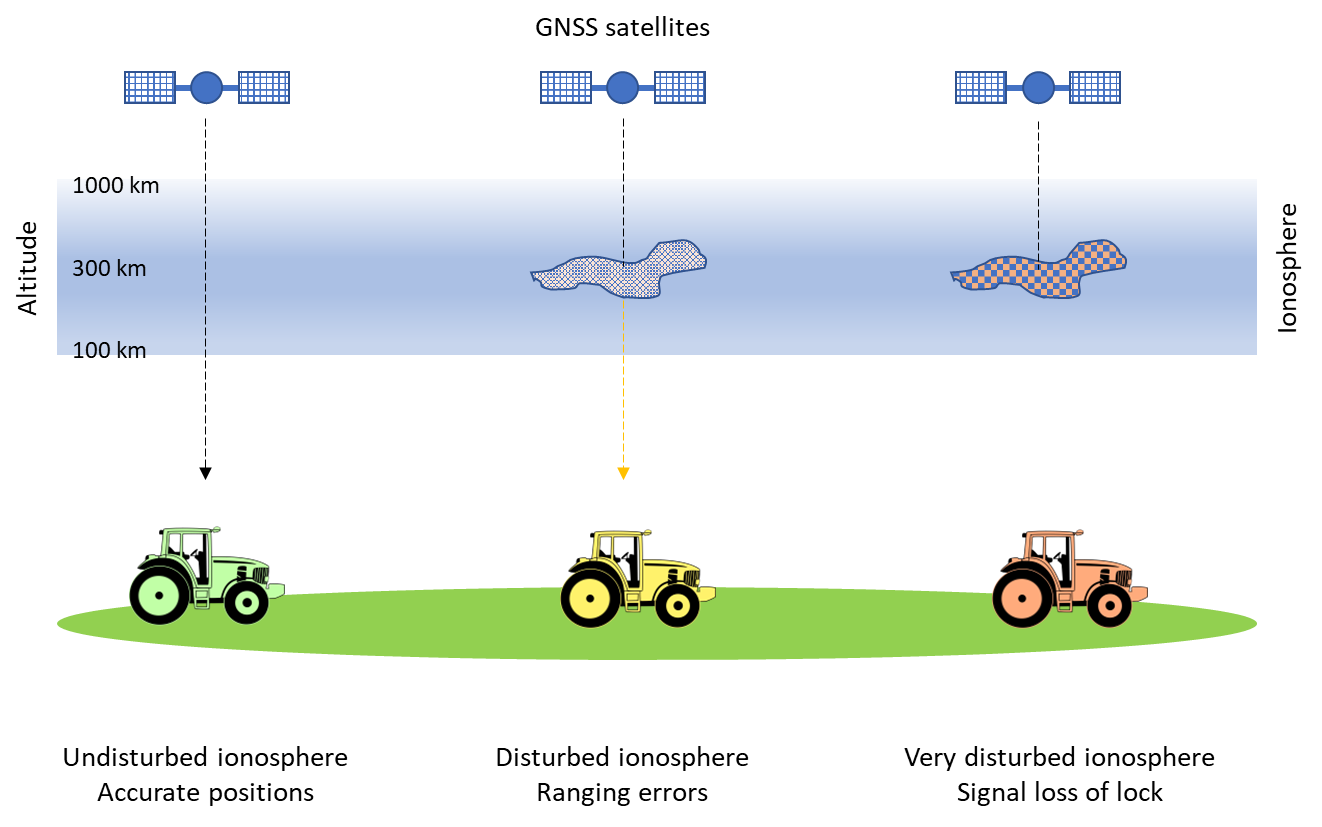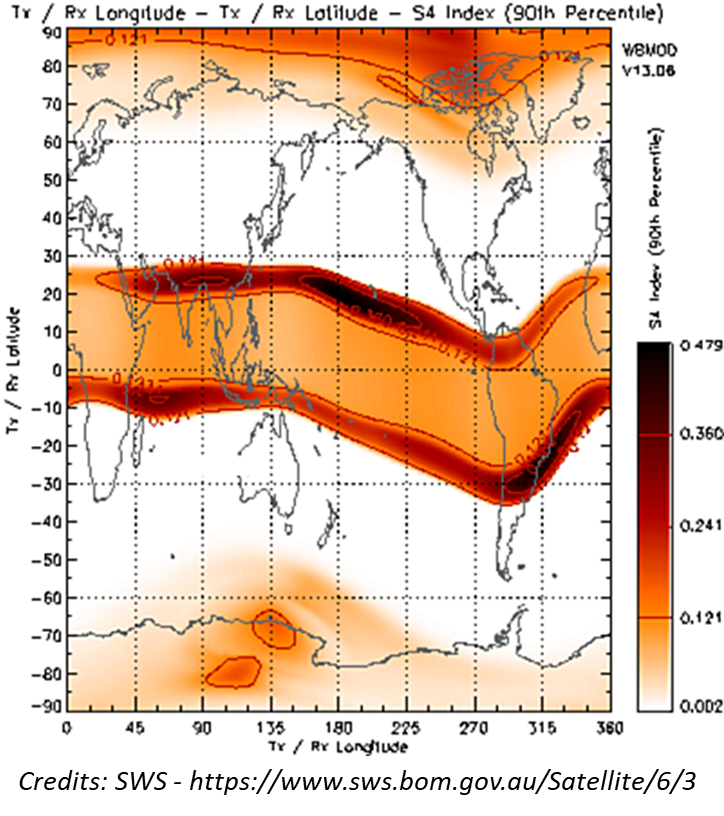In the past, space weather centers have created many overviews to highlight sources of disturbed space weather and the domains and industries that may be heavily impacted by it, such as satellites, power grids, and aviation. A small but important sector that is affected by disturbed space weather is farming and agriculture, as shown in the annotated figure underneath that was created by NASA for the AGU 2011 conference.

There are easier ways to make a living than the farming business. Aside the hard labour and long working hours, there's also the important influence of occasionally extreme weather conditions, the measures related to climate and environmental issues, diseases (crops and livestock), tough competition (internal and external markets), and so on. During the 1990s, a small but positive evolution took place when GNSS (Global Navigation Satellite System) introduced itself in the agricultural world, thus allowing for an improved positioning, navigation and timing. At that time there was only GPS, but over the next decades satellites from Europe (GALILEO), Russia (GLONASS) and China (BeiDou) further expanded the GNSS network, currently allowing accuracies of less than a few cm. This "Precision Farming" has great benefits for the ranchers such as reduced waste through over-application of fertilisers and herbicides, reduced seed consumption, fuel and time savings, lower fatigue and optimisation of crop yields. It enables 24/7 operations in challenging environments, such as low visibility, and plays an important part in the entire agricultural production cycle as well as livestock monitoring. A recent study indicated that the gains achievable through improved equipment efficiency (working rate) and increased equipment operation (hours) were relatively modest (10-20 euros per hectare), but became significant when large farms are concerned or when summed over states or countries.

The increased use of these GNSS applications also means that the precision agriculture (PA) also suffers from the effects that adverse space weather (SWx) conditions may have on GNSS technologies. In particular all SWx sources that may cause ionospheric scintillation, such as strong solar flares and geomagnetic storms, are to be watched. Ionospheric scintillation is the rapid modification of radio waves when they travel through a region of small scale irregularities in electron density in the ionosphere (see sketch underneath as well as this STCE newsitem). Severe scintillation conditions can prevent a GNSS receiver from locking on to the satellite's signal and can make it impossible to calculate a position. Less severe scintillation conditions can reduce the accuracy and the confidence of positioning results.

Ionospheric scintillation is primarily an equatorial and high-latitude ionospheric phenomenon, although it can (and does) occur at lower intensity at all latitudes. This is shown in the map underneath with darkest colors representing strong ionospheric scintillation for constant local time at all longitudes. The reported issues, i.e. loss-of-lock and degraded position accuracy, are heavily affecting precision farming. Interestingly, a 2022 study showed that the continental United States (CONUS) have observed very few instances of scintillation on commercial PA systems. This may be due to a lack of reporting or issue recognition. Ionospheric scintillation induced issues are common in Brazil which is most likely due to the combination of its low-magnetic latitude location and increasing adoption of PA. The study calculated that for the Mid-West United States (Illinois, Indiana, Iowa, and Ohio), the regional economic loss due to a GNSS outage at a critical timing (e.g. during seeding/planting season) can run into several tens of millions of dollars. Though this looks like a big number, it amounts only to a few percent of yield loss. Nonetheless, while small, it could mean the difference between profit and loss for smaller operators, especially in years with more adverse economic conditions. Thus, extreme conditions, as well as low-latitude scintillation, remain issues that require improved mitigation techniques. One of the possible actions to keep farming operations going during a sudden GNSS outage is for example to fall back on the ground-based radio positioning technology that was used a couple of decades ago. Another option is to plan for the unexpected, and talk with financial advisors and equipment dealers to discuss back-up options. Raising awareness of the scintillation problems, and improving the scintillation nowcast and forecast systems, are just a few of the other actions than can be worked upon, in particular considering the upcoming maximum of solar cycle 25.

Sources and further reading - This article was compiled from the report related to "Space Environment Engineering and Science Applications Workshop - Ionospheric Impacts: Precision Applications (Precision Agriculture)" from early 2022 (Kansas State University), as well as from newsitems from NASA and ESA (here and here), and from various other media reports such as Eurisy, Euspa, EGSC, and Future Farming.





